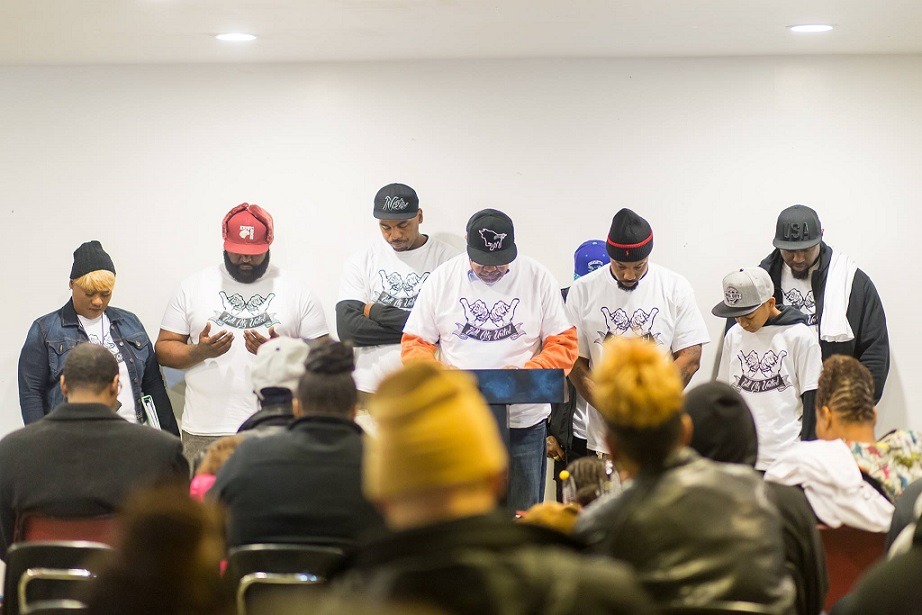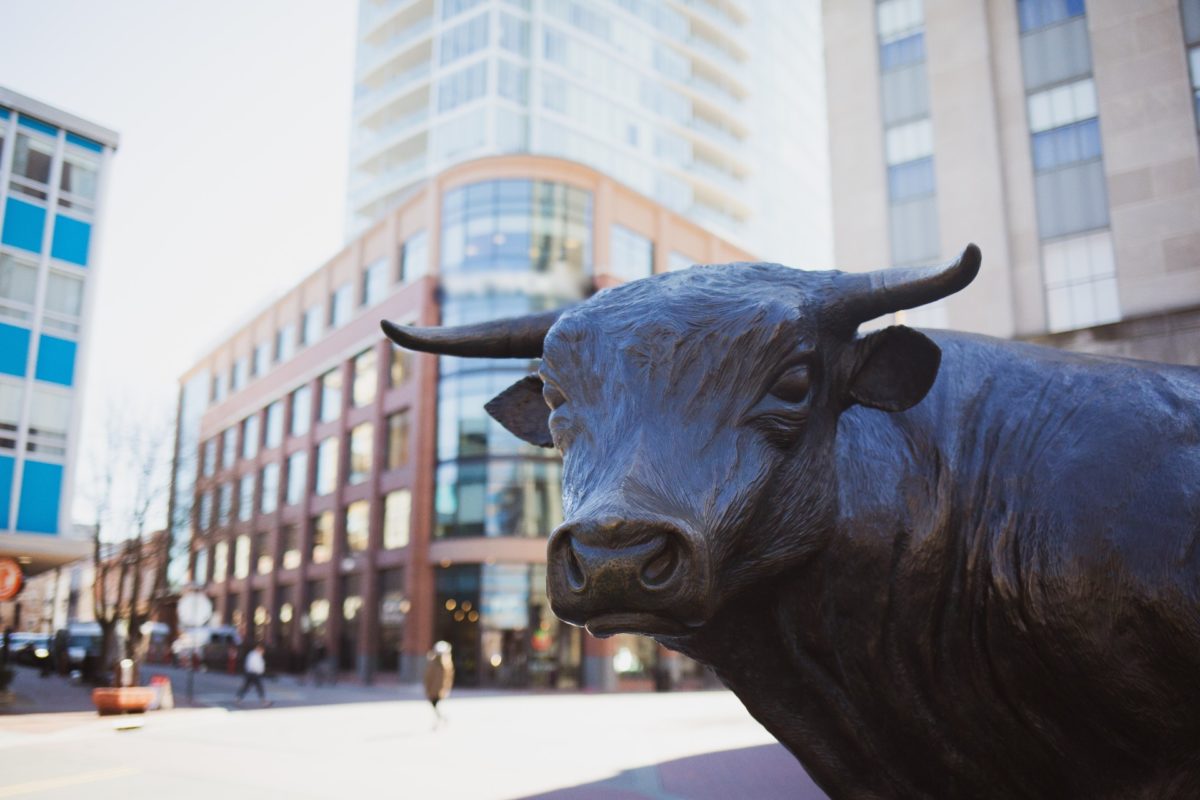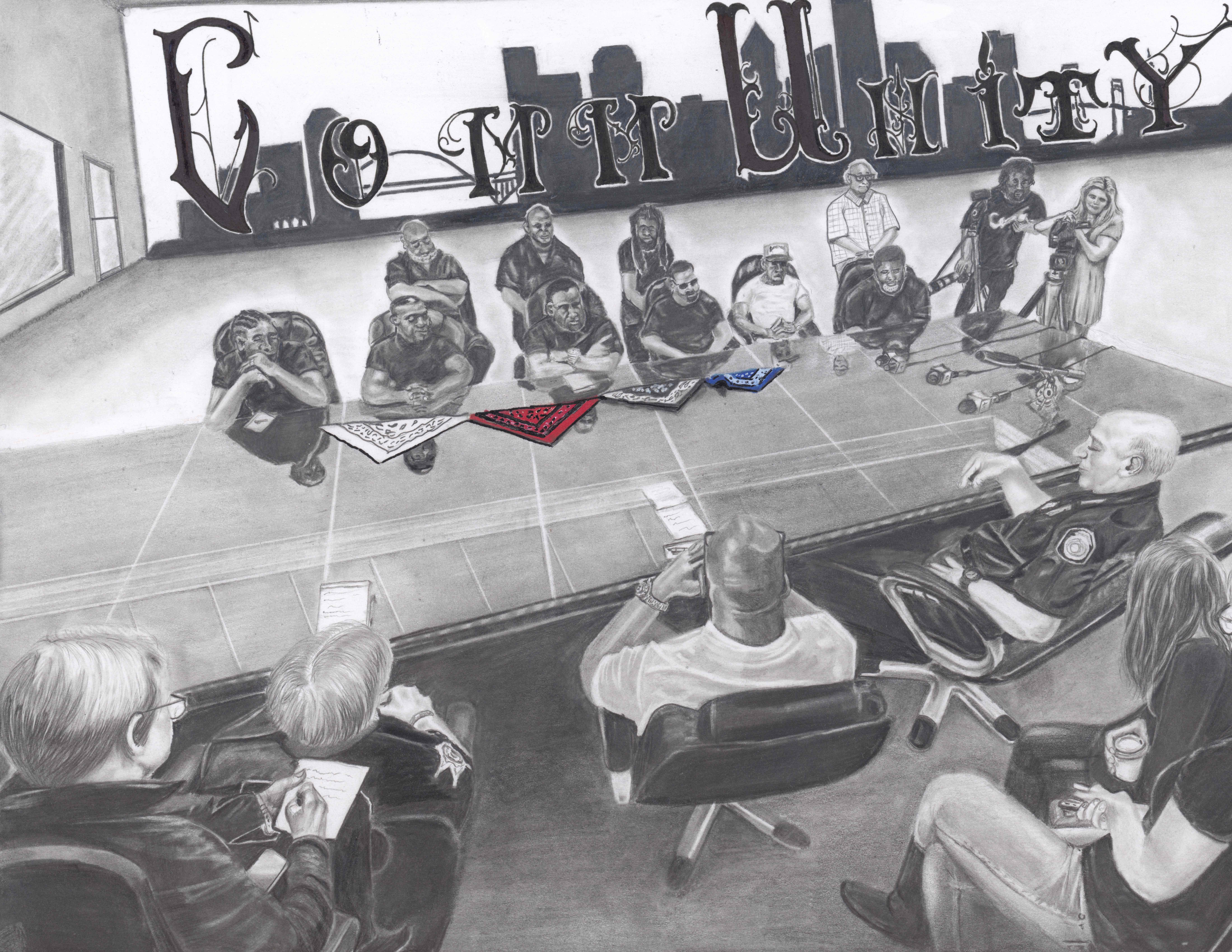What Happens When Community Violence Intervention Gets the Support It Needs to Thrive?
As cities look to make new investments in non-police responses to gun violence, the Bull City United program in Durham, North Carolina, shows the importance of stable funding and sustained commitment.

This story was produced with support from The Academy for Justice at the Sandra Day O’Connor College of Law at Arizona State University.
In April 2015, the U.S. Department of Justice released a report on violence in Durham, North Carolina, which found that young Black and Latino men in the community were between five and six times more likely to be murdered than the average resident. The city had requested the study following years of concern about high gun violence rates, which had been trending upward even as other violent crimes and the overall crime rate were declining.
The Justice Department study identified a troubling pattern in the bloodshed. A huge share of the city’s gun-related homicides and assaults were occurring in the same neighborhoods—primarily communities of color that suffered from high levels of poverty. And at the same time that young men were being killed and injured at high rates, many of those responsible were being funneled into the prison system, thus getting entrapped in another form of violence: mass incarceration.
Clearly, the traditional methods Durham had been using to address this violence were not working. So political and community leaders in the city decided to try something new. In 2016, they created Bull City United, a community-based gun violence intervention program that aims to stop the cycle of shootings and retaliations through street outreach, conflict mediation, and social support.
In the years since its launch, the program has seen success in target neighborhoods, “bringing the shootings and killings down,” David Johnson, a program manager for Bull City United, said in an interview with The Appeal. “Just seeing everyday life improving in those communities is great.”
Johnson is a former gang member who spent around a decade in prison after being incarcerated as a teenager. He was hired by Bull City United as a violence interrupter in 2016 and is now one of the organization’s longest-serving employees.
Bull City United was the first program of its kind in North Carolina, and, following promising initial results, it has inspired at least one other similar organization in the state. Today, Bull City United remains one of the most prominent anti-gun violence initiatives in the South.
Similar community violence intervention (CVI) efforts have been steadily proliferating across the United States for decades. But only in the past few years has this approach to violence prevention attracted sustained national attention, driven by increased interest in responses to crime that do not rely exclusively on policing. Since 2021, a burst of media coverage and political advocacy has helped attract hundreds of millions of dollars in new state, federal, and philanthropic funding for CVI approaches designed to interrupt cyclical violence and tackle its root causes.
This surge of new money could provide a major opportunity for Bull City United and other CVI programs, many of which have struggled in the past to obtain stable funding. Historically, they have had to jockey for limited resources while facing intense pressure to deliver rapid results. When programs fail to show consistent proof of their efficacy, funding streams can evaporate quickly, forcing coordinators to abandon whatever progress they have made.
“There just hasn’t been a significant investment made in building the infrastructure and the capacity of these agencies to be able to better serve these communities,” said Aqeela Sherrills, co-founder of the Community Based Public Safety Collective in East Orange, New Jersey. Sherrills also recently served as an advisor to the White House Community Violence Intervention Collaborative, an initiative that brought 16 jurisdictions together to develop effective, community-based public safety strategies.
For years, debates over the effectiveness of CVI have fueled hesitation among elected officials, many of whom are eager to see a clear and immediate return on investment when they fund alternatives to policing and punishment. Some supporters of these alternatives see a double standard at play. After all, they argue, cities continue to give more and more money to police, even as data has failed to show a clear correlation between overall law enforcement spending and violence reduction.
A more fundamental challenge is establishing the metrics used to judge CVI programs. Violence is complex, multi-faceted, and, in many cases, entirely unpredictable. A particularly violent month—or even a single bloody incident—can heavily skew numbers and overshadow an organization’s broader successes. Like any community effort, these initiatives need continued financial support to maintain and improve their capacity. In many cities, however, that sort of longer-term commitment has been elusive.
In this way, Bull City United has been something of an outlier in the CVI space. Even without external funding, the program has grown substantially in recent years with backing from the county and city.
Bull City United was initially funded solely through county funds, but, amid a rash of shootings in 2021, the city council allocated an additional $1 million for the organization to extend its reach into four additional census tracts, after previously operating in just two. The agency is now part of Durham County’s recently created Department of Community Intervention and Support Services.
This year, Bull City United’s budget is $2.3 million—around a fivefold increase from 2016—and the staff has more than tripled since the program launched, growing from seven to 25. Last year, the city also agreed to spend $6 million on a new headquarters for the organization near Durham’s downtown.
Durham Mayor Pro Tempore Mark-Anthony Middleton helped lead the charge for the budget increase. He says he plans to make sure the program is funded in perpetuity, with room for further expansion.
“We’re in it for the long term,” Middleton told The Appeal. “Folks who are serious policymakers into this work every day know that change takes time, know that it’s incremental.”
With cities across the United States now looking to make new investments in CVI, Durham’s experience with Bull City United provides a rare example of an alternative violence prevention program that hasn’t been forced into the sort of precarity that has often hamstrung this work.

Like most CVI programs, Bull City United is built around the idea that violence can be treated like a contagious disease. Research shows that shootings tend to be highly concentrated, occurring among a small number of individuals or groups in a community. Gun violence can spread quickly in these higher-risk populations, with studies suggesting a single shooting can lead to three or more in retaliation.
To interrupt this transmission, Bull City United adopted a model first pioneered by Cure Violence, a program that was launched in Chicago in 2000 under the name CeaseFire and now operates in more than 20 U.S. cities.
The approach relies mainly on outreach workers and violence interrupters, who work in target neighborhoods to mediate conflicts and coordinate support for those at the highest risk of being involved in shootings. These staffers are typically known in the community and often have life experiences that help them build client relationships. Many were formerly incarcerated. Some were previously involved in gangs or other criminal activity. This first-hand knowledge better positions them to offer support and guidance to individuals who may be entrapped in violence and looking for a way out.
“The program for some people is a bit controversial because [it’s] predicated upon relationships that still exist,” said Middleton. “It’s very dangerous work and it’s important work.”
As Bull City United has grown in recent years, so has the scope of its efforts. According to the organization’s quarterly reports, staffers conducted more than 2,200 conflict mediations in 2022. As of December, Bull City United had 88 active participants in a program that coordinates services related to housing, employment, education, mental health, and legal aid. Staffers also made thousands of other referrals throughout the year, connecting community members to various forms of social support.
Success has not always been easy to quantify or communicate. Since the beginning of the COVID-19 pandemic, Durham—like most U.S. cities—has experienced elevated levels of gun violence, including a rise in homicides. Murders reached a record high citywide in 2021 before declining slightly last year, following what appears to be a nationwide trend.
Yet data shows that the large majority of Durham’s gun violence is occurring outside Bull City United’s areas of activity. In 2022, there were seven gun homicides in the six census tracts where the agency operates, out of a total of more than 40 citywide.
But it’s also clear that Bull City United still has work to do in its target neighborhoods. The program reported that 48 people were shot across its six census tracts in 2022. Twenty-six of those shootings took place in the four newest focus areas. It’s difficult to say what those figures would have looked like without Bull City United.
“I believe in something called headline stopping,” said Middleton. “It’s easy to count the incidents that actually occur. It’s very hard to quantify the shootings that did not occur because we interrupted them.”
Bull City United’s expansion has also brought more acute controversy. Last September, the program fired one of its newly hired violence interrupters after she was arrested on drug charges. The incident sparked a wave of negative press and attracted criticism from within the community.
“We need to know we can trust the ones they are hiring,” Sheryl Smith, a Durham activist who lost her son to gun violence, told the local CBS News affiliate after the arrest.
Johnson, the Bull City United program manager, called the episode an “isolated incident” and a learning experience.
“Like any organization, things happen, and you deal with it as an organization, and you get through it,” Johnson told The Appeal. “I wouldn’t say it’s had a negative impact, because we still have great relationships with the communities, we still have our partnerships, and we’re still boots on the ground committed to what we’re trying to do.”
Then, in October, a 34-year-old violence interrupter named Reshaun Cates was found shot to death in his car. Cates had been with Bull City United for just over a year and had recently been hired to a full-time position, according to his mother, Doris Cates. Police suspected that he had been targeted.
Cates was released from prison in 2020 after serving nearly 16 years on second-degree murder charges. Family members said he had become deeply invested in violence intervention work since returning home.
“He loved those kids,” Doris Cates told IndyWeek in October. “He would do everything he could to keep those kids on the right track.”
CVI initiatives across the country have suffered similar tragedies in recent years. In 2021 and 2022, three outreach workers with Baltimore’s Safe Streets program were killed in the very sort of gun violence they were working to prevent.
These incidents underscore the often turbulent, high-stakes nature of CVI work. Many violence interrupters and outreach workers are still actively working to disentangle their own lives from gangs or the underground economy. A standard recovery process might involve removing negative influences from one’s life, but these staffers are instead diving directly back into the crossfire in an attempt to pull others out. This dynamic is the basis for the success of community violence intervention. But it also presents inherent risks that CVI programs must be prepared to manage as they launch or expand.

With approximately half a billion dollars in new funding freed up for CVI initiatives nationwide since 2021, the field appears to be on the verge of unprecedented growth.
Advocates are hopeful about the future of their work, but they are also wary of the challenges that can come with this sort of expansion.
“If it is not well coordinated, if it’s not implemented with data-driven strategy, we can throw a lot of money at a problem and not get results,” said David Muhammad, executive director of the nonprofit National Institute for Criminal Justice Reform. “Some people who are not interested in this work at all will say we spent all the money and it didn’t work. They will say we need to go back to mass incarceration.”
Muhammad has been involved in violence intervention work for more than a decade and now provides leadership and technical assistance to CVI initiatives in a number of cities. He notes that many of the most successful programs offer robust wraparound services, including stipends for participants—which Bull City United does not offer.
Considering the high price of gun violence, it makes sense for cities to be making bolder commitments to CVI, Muhammad argues. The National Institute for Criminal Justice Reform recently conducted a series of studies on the monetary cost of gun violence in U.S. cities, in which it found that taxpayers in four Southern cities end up paying around $1 million for each shooting homicide—costs that were largely tied to incarceration and the legal system, hospital services, and lost revenue. Beyond saving lives, CVI programs can save money, Muhammad says, especially when compared with more traditional approaches to tackling violent crime.
In Durham, Bull City United and its supporters appear to have successfully convinced elected officials that CVI is worth the investment. With the group’s recent expansion still underway, Johnson says they are not currently seeking additional funding from federal or philanthropic grants. But that could change in the future.
“There’s never enough resources,” said Johnson. “The bigger the problem, the bigger the need.”
